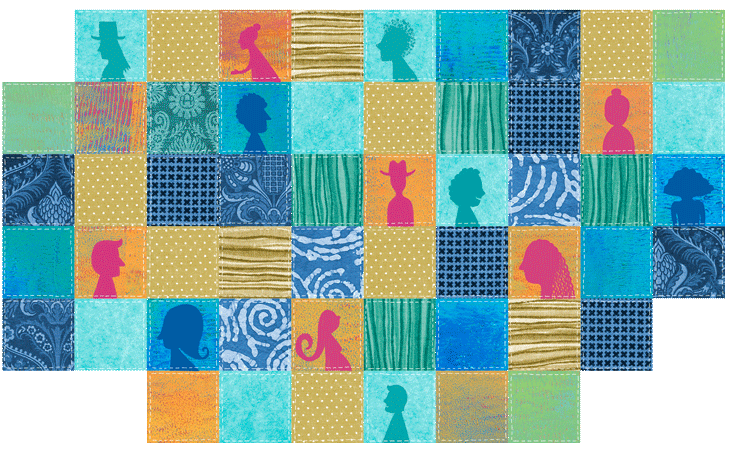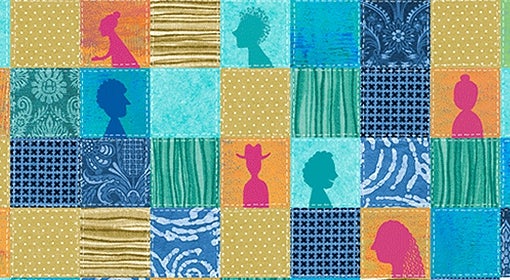
In her off-campus apartment in North Oakland, Pitt senior Annie Abernathy sits at her desk doing schoolwork. It’s quite an artistic setting. A crisp fall day beckons outside her window; inside, the songs of Joni Mitchell, Joan Baez and Fleetwood Mac play in the background; and on her computer screen beautiful patterns and colors swim before her eyes.
But she isn’t looking at paintings or illustrations. She’s immersed in images of quilts—creations that can demand just as much skill and creativity as those on canvas or of stone.
The double major in history of art and architecture and museum studies scrolls through pictures of multicolored squares, geometrically arranged diamonds and other carefully designed shapes. Her task is to discover elements that could connect many different kinds of artwork to each other.
It’s an assignment for Abernathy’s curatorial practicum class in Pitt’s History of Art and Architecture Department. She and her classmates are helping to create a temporary exhibition from works in the permanent collection of the Westmoreland Museum of American Art. The museum, about 30 miles from Pittsburgh, holds a nationally recognized collection of more than 4,000 objects of fine and decorative American art dating back to the mid-18th century.
In the practicum—designed for students, like Abernathy, who want to gain practical experience managing art collections—the students are tasked with proposing exhibition ideas to the museum. They virtually explored the Westmoreland’s collection, looking for themes to unite clusters of art. Abernathy and her classmates teamed up to combine their findings, eventually proposing three different exhibition ideas to the Westmoreland.
The final result: “Pattern Makers,” an exhibition that ran this year from February to May. Art selections were based on patterns—first in quilts, and then in works of art more broadly. By identifying motifs, not only in paintings and designs, but also in photographs and crafts, the exhibition depicted how works of art were made and influenced.
As the class—led by Alex Taylor, a Pitt professor and historian of modern American art and visual culture—worked to curate the exhibition, Abernathy virtually dove into the Westmoreland’s quilt collection, scrolling from one piece to the next from her off-campus apartment. She found herself pausing over a 19th century “postage stamp” pattern quilt of unknown origins. A classmate had paired the quilt with a painting composed of colorful squares arranged in a pixelated, abstract pattern. The painting, already chosen for the exhibition, was by John Grillo, a renowned American abstract expressionist painter known for brightly colorful works.
Abernathy was struck by how much the quilt’s multicolored squares, stitched together by an unknown hand, resembled the well-known Grillo piece. Yet, only one of these compositions is widely acknowledged as fine art. The other is not. Seeing this helped Abernathy contemplate the deeper message of “Pattern Makers:” “the importance of using pattern to think about larger issues at stake in art. In this case, it’s the issue of who is and isn’t recognized for their work in the art world.”
The aspiring curator says that, in the future, when she’s in a position to help decide whose stories will hang on a museum’s walls, she won’t forget the lessons she learned in this class. She’ll do her best to acknowledge the diverse spectrum of art’s influencers and creators.
Some patterns, after all, are worth breaking.
This story is part of Pitt Magazine’s special Summer ’21 digital issue.



